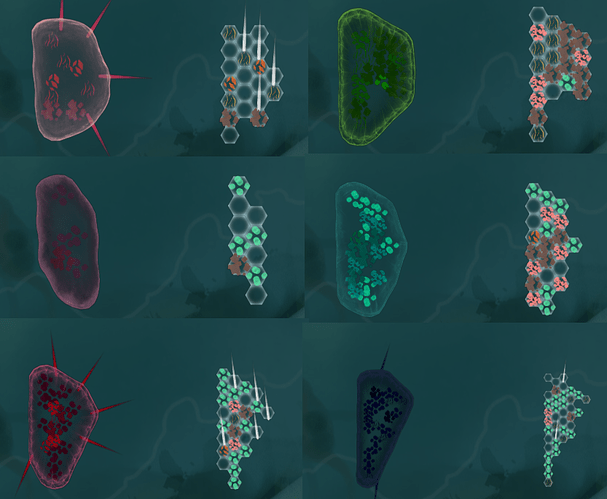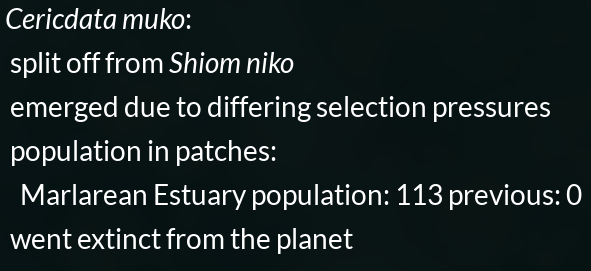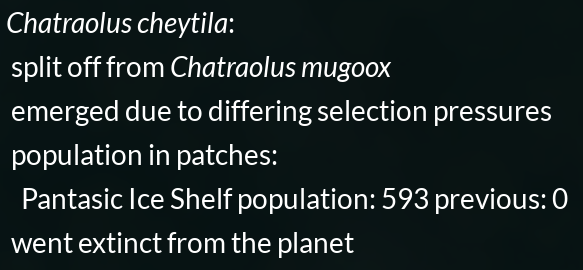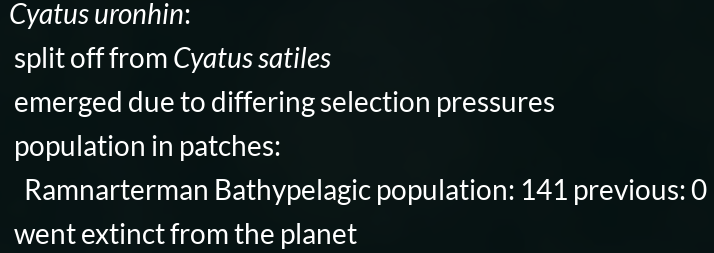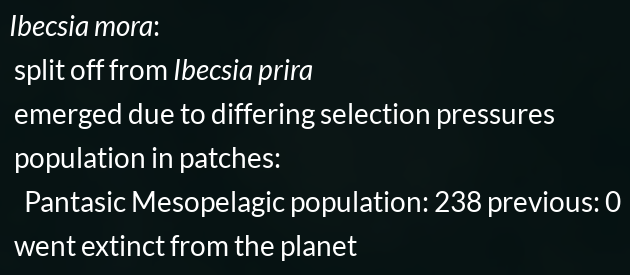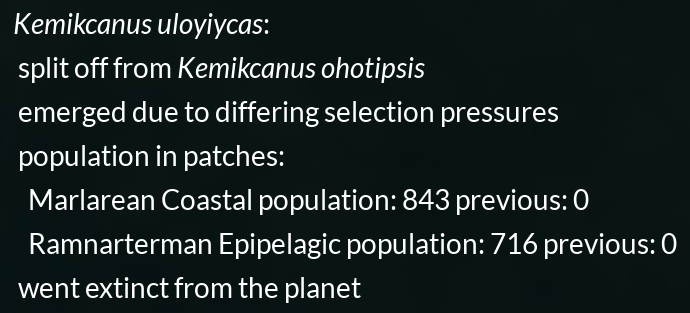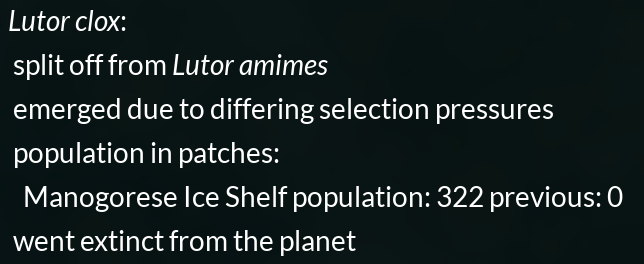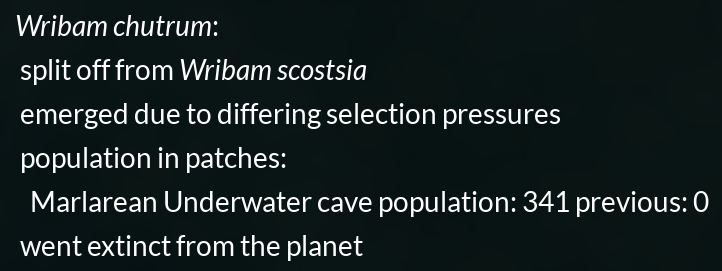I’ve noticed some flaws in the auto evo system, resulting it in producing homogeneous organisms.
- Most organisms have a capsule or triangle shape (always with a point on the right side for some reason), and a similar size of around 25.
- No specialization into niches. The vast majority of species (over 90% across 5 worlds with 25 generations) have cytoplasm (and protoplasm), Metabolosomes, Thylakoids, Chemosynthesizing Proteins, and Rusticyanin (97% have this despite it being extremely rare on Earth). 70% have Perforator Pilus (and Nitrogenase). This means that the majority of species are getting energy from all food sources in the game: Glucose Clouds, Photosynthesis, Hydrogen Sulfide, Iron, and Predation. Real species get energy primarily from one food source.
- Few species (under 15% in the same 5 words) have Oxytoxisome, Flagellum, or a Nucleus. No species has a binding agent. Very few (under 3%) have a Slime Jet, Signaling Agent, or Chemoreceptor. There is no selection for these organelles, for behavior, or for rigidity. This is because auto evo only takes into account the food sources an organism can consume, and how efficient it is with those resources (how big the ratio of ATP production to ATP consumption is). Auto evo does not take into account stats like speed.
This is an example of what auto evo produces. Here are six organisms from a world ran for 20 generations, each selected because they were the first species in a large branch (so the last common ancestor of any two of these species was over 12 generations ago). They all have roughly the same shape, and they all have multiple food sources. Some of them like the fifth and sixth have adaptations for all five food sources. None of them have any unique agents.
What are the solutions to these problems?
- You could have the auto evo account for stats like speed, so organisms evolve organelles like flagella. (Not taking this into account can lead to absurd scenarios where an organism with hundreds of hexes of cytoplasm can support a healthy population according to auto evo, despite being unable to move and starving within seconds in the actual game). Also this issue prevents sessile plants from evolving.
- You could have specialization. Perhaps once a cell unlocks a protein, it’s cheaper to add more, and for larger cells (which are more evolved and adapted to their niche) it’s more expensive to add new proteins, or the more you have of a protein, the more efficient it is. A plant shouldn’t be able to suddenly unlock Rusticyanin, and a predator shouldn’t be able to suddenly unlock Thylakoids, as these things don’t happen in real life. In general, organisms should be adapted to specific niches rather than trying to get all food sources as the current system incentivizes.
Auto evo should produce more of a diversity of life. You could have small organisms with a few hexes (or less) living off glucose or vents or sunlight or heat or iron, medium sized prokaryotes adapted to specific foods or predation (hunting the small organisms, or hunting larger organisms with spikes), and eukaryotic predators or plants. There could be organisms adapted to being plants (cellulose wall, sessile) and organisms adapted to being animals (no photosynthesis) rather than most organisms being generalists.
